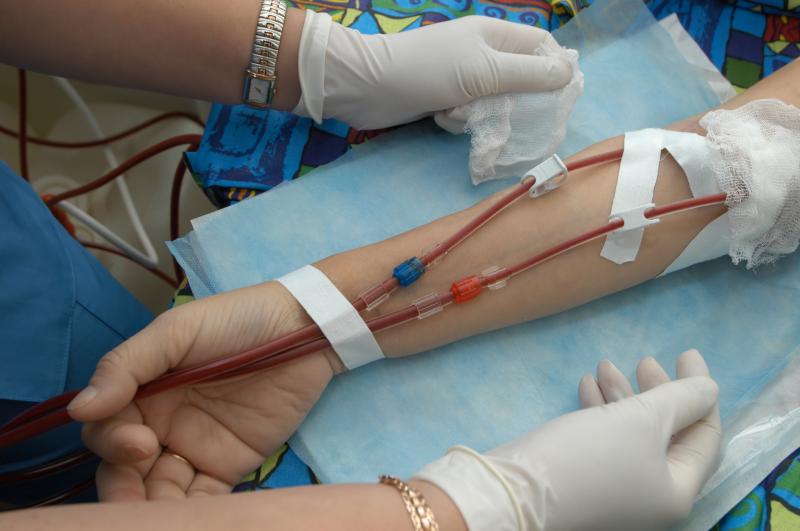
Treatment with mannitol does not appear to have superior effects on intradialytic systolic blood pressure (SBP) decline compared with saline solution in acute or chronic kidney disease patients initiating haemodialysis, although the former reduces the frequency of intradialytic hypotension (IDH) episodes, according to the results of a trial.
A total of 52 patients requiring initiation of haemodialysis for acute or chronic kidney disease were randomized to receive mannitol 0.25 g/kg/h (n=25; mean age, 53.4 years; 48 percent male) or placebo (similar volume of 0.9% saline solution; n=27; mean age, 57.7 years; 52 percent male) during the first three dialysis sessions.
The primary endpoint of average decline in SBP did not significantly differ between the mannitol and placebo groups (mean, 15 vs 19 mm Hg, respectively; p=0.3).
On the other hand, the secondary endpoint of the proportion of total sessions complicated by IDH (defined as a decrease of ≥20 mm Hg from the predialysis SBP) was substantially lower in the mannitol group (25 percent vs 43 percent). The drug conferred a nominally lower risk for developing an episode of IDH (odds ratio, 0.38, 95 percent CI, 0.14–1.00), although this finding was of borderline statistical significance (p=0.05).
There were no consistent differences in cardiac and kidney injury biomarker levels between the two treatment groups.
Mannitol was safe and well tolerated compared with placebo, and there were no major issues encountered in terms of protocol feasibility.
Despite the study’s modest sample size and number of events, the findings provide a rationale to design larger multicentre studies using hypertonic mannitol, perhaps with a longer intervention period, to minimize the frequency of intradialytic hypotension, according to researchers.